Introduction to Lead Generation for Software Development Companies

Lead generation is about identifying and cultivating potential clients for your business's products or services.
But what does it entail specifically for software companies?
It’s about understanding the unique needs of the industry and developing strategies that resonate with potential clients who are actively seeking software solutions.
In a software development company, lead generation isn't just about broad-reaching marketing. It's a targeted endeavor. The focus is on attracting businesses or individuals who are actively searching for custom software development services, whether it’s for improving their operational efficiency, scaling their technology, or enhancing customer engagement.
By employing specific tactics like content marketing, SEO, and digital advertising tailored to these needs, you can generate quality leads more effectively.
Importance of Generating Leads in Software Development Projects
Why is lead generation indispensable for software development companies?
The answer lies in the fierce competition and rapidly evolving nature of the technology sector. For example, companies offering niche services such as Transportation software consultancy often rely on highly targeted leads because their solutions cater to specific operational, logistics, and automation challenges within the transport ecosystem.
For a software development company, the lead generation process is vital to sustain and grow the business. Without a steady influx of new leads, your sales teams might struggle to meet their targets, and the company’s growth can stagnate.
Effective lead generation strategies ensure a consistent pipeline of interested prospects, which can be converted into successful, long-term projects. This process is especially crucial in areas such as the development of bespoke software, where understanding client needs and aligning them with your service offerings is key to securing contracts.
Lead Generation Process: Converting Potential Leads into Paying Customers

Key Steps in the Lead Generation Process:
1. Target Market Identification
This involves determining who will benefit most from your software. If your specialty is in custom CRM solutions, your target is likely sales teams and businesses requiring technological upgrades.
To Identify Target Market:
Research and Analysis: Conduct thorough market research to understand the specific needs of your target audience, which might include sales teams or technology companies. Utilize tools like surveys and market analysis reports.
Defining Ideal Customer Profile: Create detailed buyer personas representing your ideal clients, such as chief technology officers or decision-makers in businesses. This step helps in tailoring your marketing efforts more effectively.
To know more on how to define your Target Audience, you can read our blog - Target Audience: Tips on how to identify them for better sale.
2. Generating Leads
Here, collaboration between your sales team and marketing efforts is key. Employing SEO, content marketing, and digital advertising helps draw in potential clients who are looking for software solutions.
To Generate Leads Implement:
Content Marketing: Develop and publish valuable content that addresses the specific needs and challenges of your target market. This can include blog posts, whitepapers, landing pages, and case studies showcasing your software solutions for lead analysis.
Digital Advertising: Implement targeted digital advertising campaigns on platforms where your potential leads are most active. Use SEO strategies to improve your visibility in search engines and attract organic traffic.
3. Qualifying Leads
It’s essential to filter the leads to find those best suited for your services. This means assessing if a lead has a genuine need for your software and the capacity to engage.
For Qualify Your Leads Implement:
Use of CRM Systems: Implement a CRM system to track interactions with leads and gather insights about their behavior and preferences. This helps in identifying which leads are more likely to convert into paying customers.
Lead Scoring: Employ lead scoring techniques to evaluate and prioritize leads based on their engagement level and fit for your services.
4. Nurturing Leads
Building relationships with potential clients is vital. This can involve consistent communication through email campaigns or informative blog posts, keeping potential clients engaged and moving them closer to a sale. Nurturing leads for software development companies helps in lead generation
To Nurture Leads Implement:
Email Marketing: Execute drip email campaigns that provide continuous, valuable information to your leads. This can include updates about your software services, industry insights, and how-to guides.
Personalized Communication: Tailor your communication based on the lead’s specific interests and interactions with your company. Personalized messages can significantly improve engagement rates.
To know more on how to nurture leads, you can read our blog - 10 Must-Try Lead Nurturing Tips: Building Relationships And Generating Leads
5. Conversion
The final goal is converting these nurtured leads into paying customers, typically involving direct engagement from your sales team.
To Convert Your Leads:
Direct Engagement: Use your sales team to directly engage with the leads that have been warmed up through your nurturing efforts. This includes setting up demos, offering trials of your software, and discussing specific client needs.
Follow-up Strategies: Implement effective follow-up strategies to keep your company at the forefront of the potential client’s mind, encouraging them to make a purchasing decision.
How to Generate Leads for a Software Development Company

Best Lead Generation Techniques for Software Sales
Generating leads is a critical challenge for software development companies. Let’s explore practical strategies that can effectively boost lead generation efforts.
1. Develop a Comprehensive Lead Generation Strategy
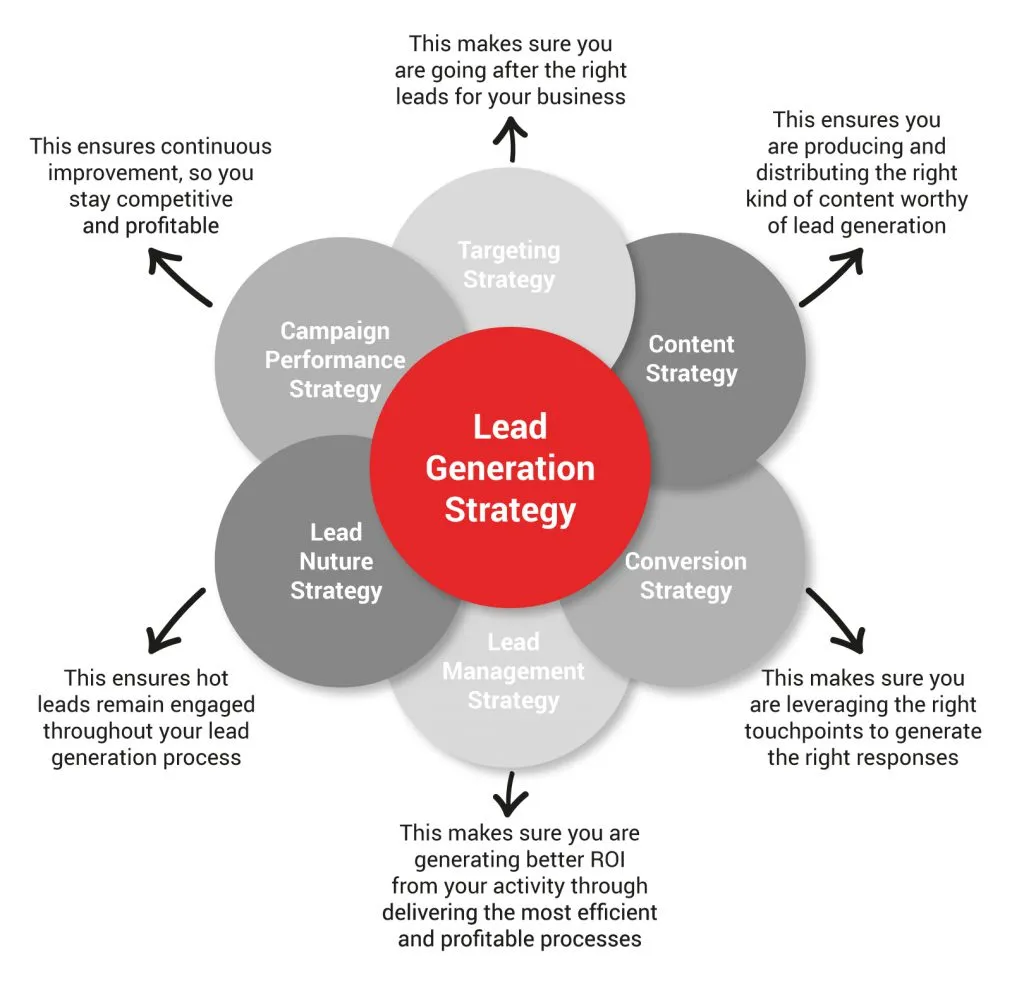
Strategize with Decision Makers: Engage decision-makers within your company to create a well-rounded lead generation strategy. This should include identifying target markets such as businesses needing software solutions and the chief technology officer demographic.
Focus on Lead Generation Efforts: Allocate resources specifically for lead generation activities like market research and campaign development.
To know more about how to develop a lead generation strategy, you can read our blog - Mastering Lead Generation Strategies: A Step-by-Step Guide
2. Utilize Advanced Digital Marketing Techniques

SEO and Organic Traffic: Optimize your website and online content for search engines to increase organic traffic. This helps in attracting leads actively searching for software development services.
Landing Pages and Paid Advertising: Create targeted landing pages for your software services, and use paid advertising to drive traffic to these pages. This can be an effective way to generate leads for software development.
3. Engage in Direct Marketing Efforts

Email Marketing Campaigns: Develop email marketing campaigns targeting potential clients such as software clients and technology companies. Provide them with relevant information about your software services and solutions.
Personalized Outreach to Potential Leads: Identify potential leads, like businesses looking for software solutions, and reach out to them directly through personalized communication.
4. Leverage Social Media and Online Platforms
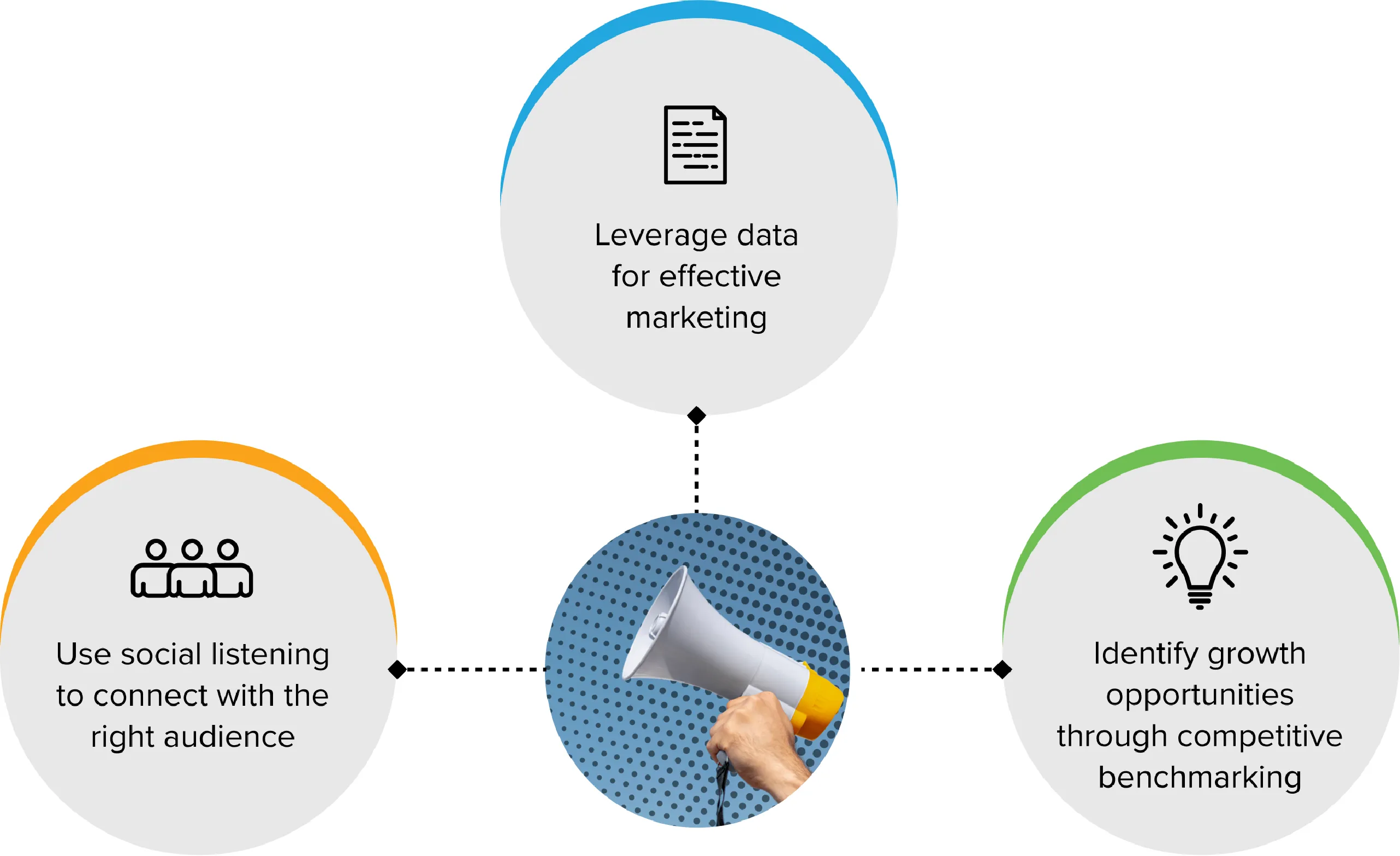
Build a Strong Social Media Presence: Establish your company’s presence on platforms where your target audience, including chief technology officers and software clients, are most active.
Content Marketing on Digital Platforms: Share informative and engaging content related to software development and lead generation on various digital platforms.
5. Collaborate with Industry Partners

Networking with Technology Companies: Form partnerships with other technology companies for mutual lead sharing and referrals. This can open up new avenues for lead generation.
Participate in Software Industry Events: Attend and participate in software industry events and conferences to network with potential clients and showcase your services.
6. Implement CRM Systems for Lead Management

Track and Analyze Leads: Use CRM systems to track interactions with potential leads and analyze their behavior and preferences. This helps in fine-tuning your lead generation strategies based on data-driven insights.
Lead Generation Tools for a Software Company
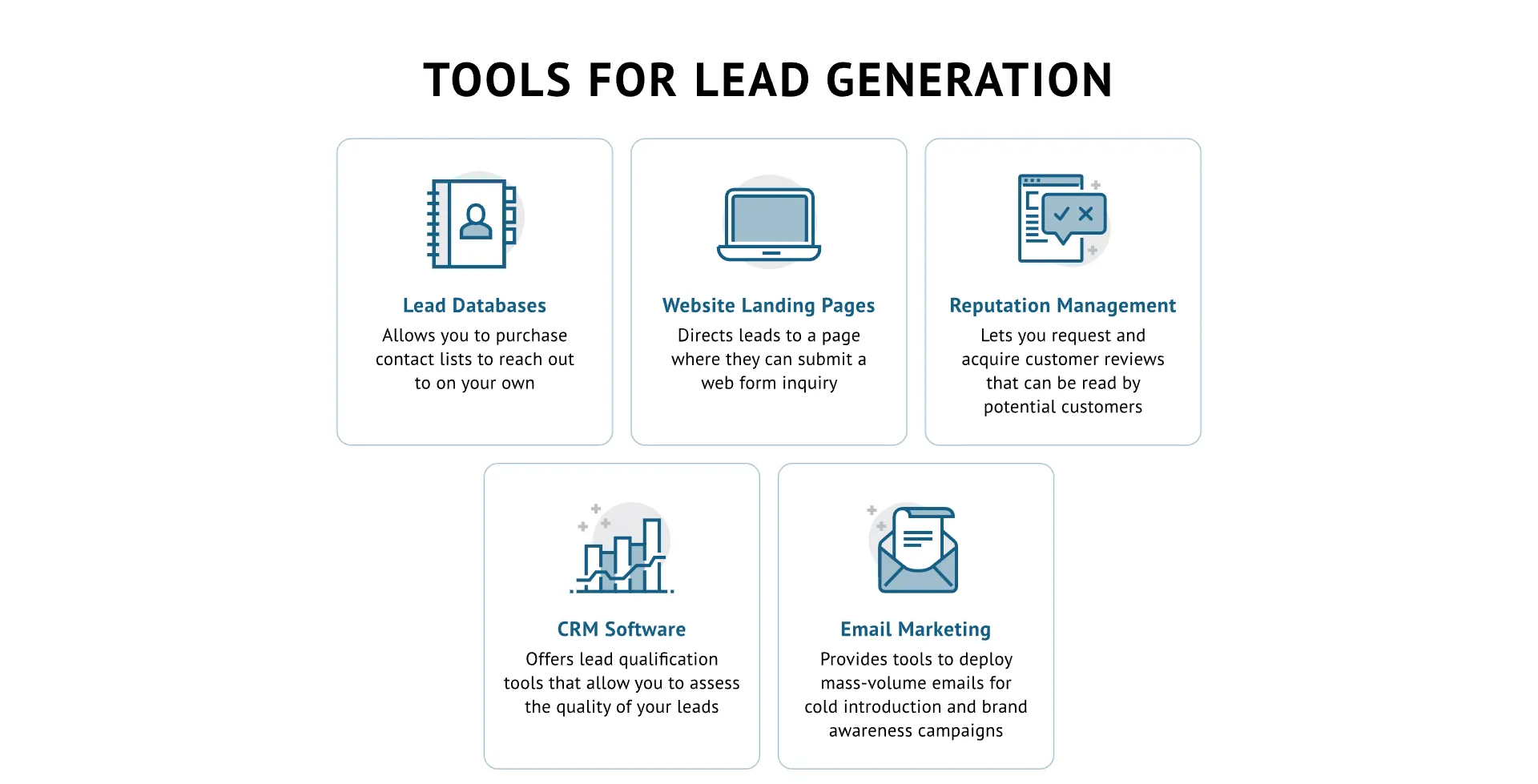
To effectively generate leads for a software development company, utilizing the right tools is essential. By strategically using these tools, a software development company can enhance its lead generation efforts, targeting specific audiences like software clients, technology companies, and chief technology officers. This approach ensures a blend of organic and paid strategies, content marketing, and efficient lead management for huge success for the company
Here's a direct rundown of effective tools for a software company:
1. CRM Systems (Customer Relationship Management):
- Purpose: CRM systems are indispensable for managing interactions with current and potential clients. They help in lead analysis and tracking communication.
- Examples: Salesforce, HubSpot CRM.
2. SEO Tools:
- Purpose: Enhance your software company's search presence and attract organic traffic through optimized content.
- Examples: SEMrush, Moz, Google Analytics.
3. Email Marketing Platforms:
- Purpose: Essential for nurturing leads and running targeted drip campaigns. These platforms offer features for personalized email automation, crucial for software sales leads.
- Examples: Mailchimp, Constant Contact.
4. Social Media Management Tools:
- Purpose: To manage and optimize your presence on various social media platforms. Ideal for engaging with technology companies, potential customers, and driving digital marketing efforts.
- Examples: Hootsuite, Buffer.
5. Landing Page Builders:
- Purpose: This tool has different variations to Create and optimize landing pages to convert traffic from your digital marketing campaigns into leads.
- Examples: Unbounce, Leadpages.
6. Paid Advertising Platforms:
- Purpose: To run and manage paid advertising campaigns that can target specific segments like decision makers and chief technology officers in the software industry.
- Examples: Google Ads, LinkedIn Ads.
7. Content Management Systems (CMS):
- Purpose: To create, manage, and optimize your website's content for lead generation and SEO.
- Examples: WordPress, Drupal.
8. Lead Generation Software:
- Purpose: This effective tool is Specifically designed to automate the lead generation process, from capturing to nurturing leads.
- Examples: Marketo, Pardot.
Lead Generation Trends for Software Companies
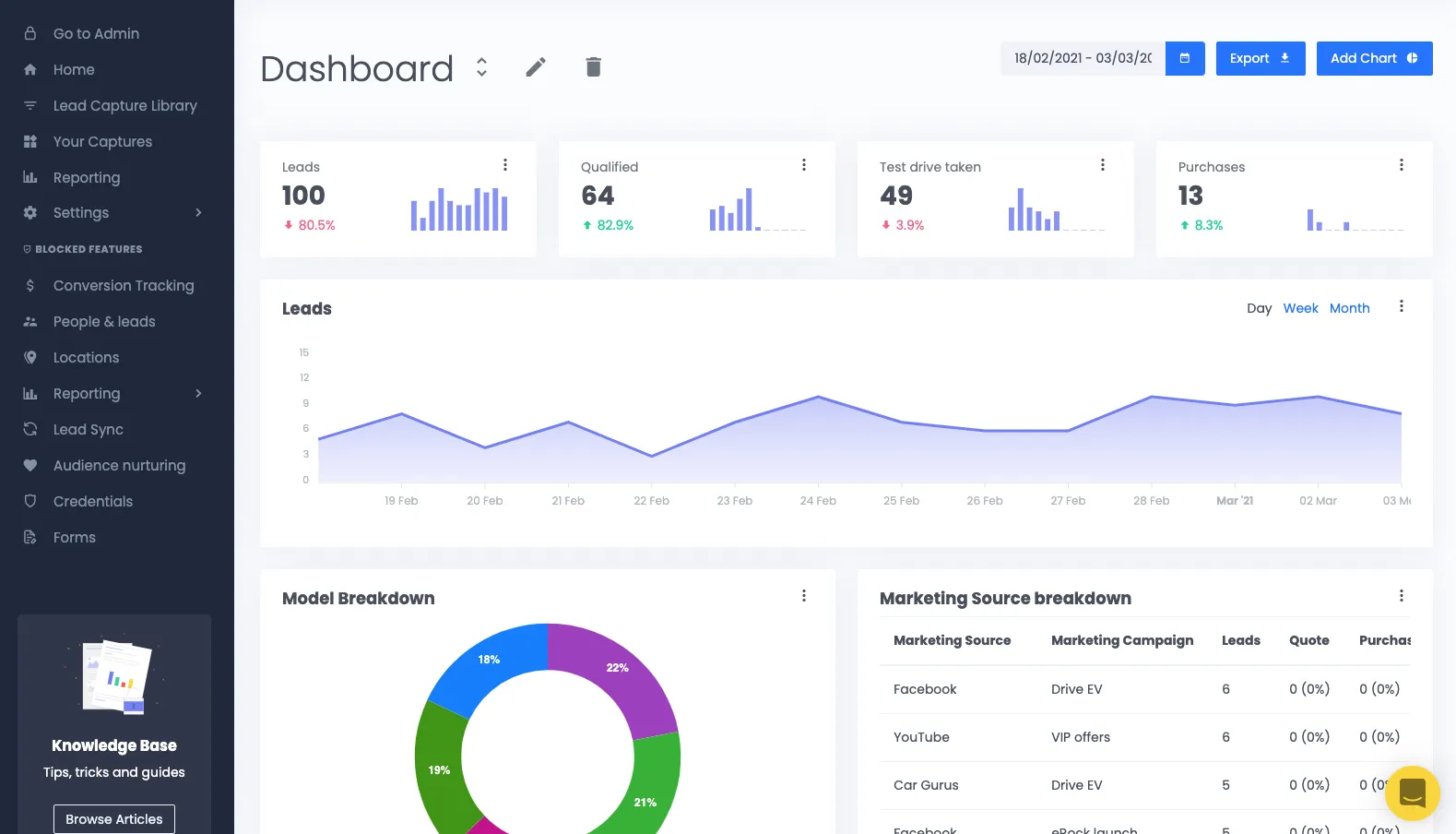
Software development companies looking to enhance their lead generation strategies should consider several key trends:
AI-Generated Content for Lead Gen
AI tools, crucial in creating content that appeals to potential customers, can sometimes be repetitive. Enhancing this content with a touch of human creativity ensures it resonates better with target customers, thereby increasing the chances of conversion and securing more deals.
Account-Based Marketing (ABM)
This strategy focuses on generating qualified leads by targeting specific accounts rather than a broad audience. ABM is instrumental in the sales process, as it involves understanding decision-making units, personalizing messaging, and fostering genuine relationships, which are key to turning new clients into loyal customers.
Intent-Based Lead Generation
This involves identifying and focusing on prospects who show genuine interest in your services. By tailoring your approach to meet the specific needs of these potential customers, you can significantly enhance engagement and lead nurturing, leading to a higher number of new customers.
Direct Messaging for Higher Engagement
The digital world favors direct, conversational messaging. By refining your value proposition and focusing on the prospects' needs, you can create more relevant and engaging content, leading to improved lead generation and conversion rates.
Generative AI for Marketing Efficiency
Incorporating generative AI into your marketing strategy can streamline processes, allowing for more efficient targeting and engagement of ideal customers.
Deep Customer Engagement
Building strong relationships with current clients can lead to more referrals and new clients. Emphasizing collaborative growth and aligning sales and marketing efforts can result in a more effective sales process and higher conversion rates.
Adapting to Search Engine Policies
Keeping up with the latest policies of search engines ensures that your content stays visible in search results, which is crucial for attracting potential customers and generating more leads.
Comprehensive Lead Generation Strategies
This includes optimizing landing pages, soliciting positive reviews, hosting online events, and publishing case studies. Utilizing social media, especially LinkedIn, for creating content and connecting with potential customers, as well as establishing referral programs, are effective ways to attract new customers and provide lead generation services.
The Future of Lead Generation for a Software Development Industry

The future of lead generation for software development companies is set to be influenced by several emerging trends and technological advancements:
AI and Advanced Analytics: AI technologies will play a pivotal role in identifying and predicting potential customer behaviors and preferences. This will allow software companies to target their audience more effectively, ensuring that their lead generation efforts are more precise and yield higher quality leads.
Increased Use of Automation: Automation in marketing and lead generation processes will become more prevalent. This will not only streamline operations but also allow for more personalized engagement with potential clients at scale.
Shift Towards Account-Based Marketing (ABM): ABM will become more dominant, focusing on high-value accounts rather than a broader audience. This strategy will help software development companies to generate leads that are more likely to convert into long-term clients.
Enhanced Customer Experience: As the market becomes more competitive, the emphasis will be on providing a seamless and personalized customer experience. This involves using data to understand and anticipate customer needs, thereby improving engagement and the likelihood of conversion.
Integration of Sales and Marketing Efforts: The future will see a closer integration between sales and marketing teams. A unified approach will ensure that the messaging is consistent and that leads are nurtured more effectively through the sales funnel.
Rise of Conversational Marketing: Utilizing chatbots and AI-driven communication tools will enable real-time engagement with potential clients. This approach helps in qualifying leads quicker and provides a more interactive experience for the customers.
Content Marketing Evolution: The approach to content marketing will evolve to be more interactive and value-driven. Content that educates and informs, while also being engaging, will be key in attracting potential customers.
Privacy and Data Protection: With increasing concerns about data privacy, lead generation strategies will need to adhere to stringent data protection regulations. This means transparent data collection and handling practices will become integral to lead generation efforts.
Voice Search and SEO: Optimizing for voice search will become essential as more searches are conducted via voice-activated devices. This requires adapting SEO strategies to align with how people naturally ask questions verbally.
Interactive and Virtual Reality (VR) Experiences: As technology advances, incorporating interactive elements and VR into marketing campaigns could become more common, providing unique and immersive experiences for potential clients.


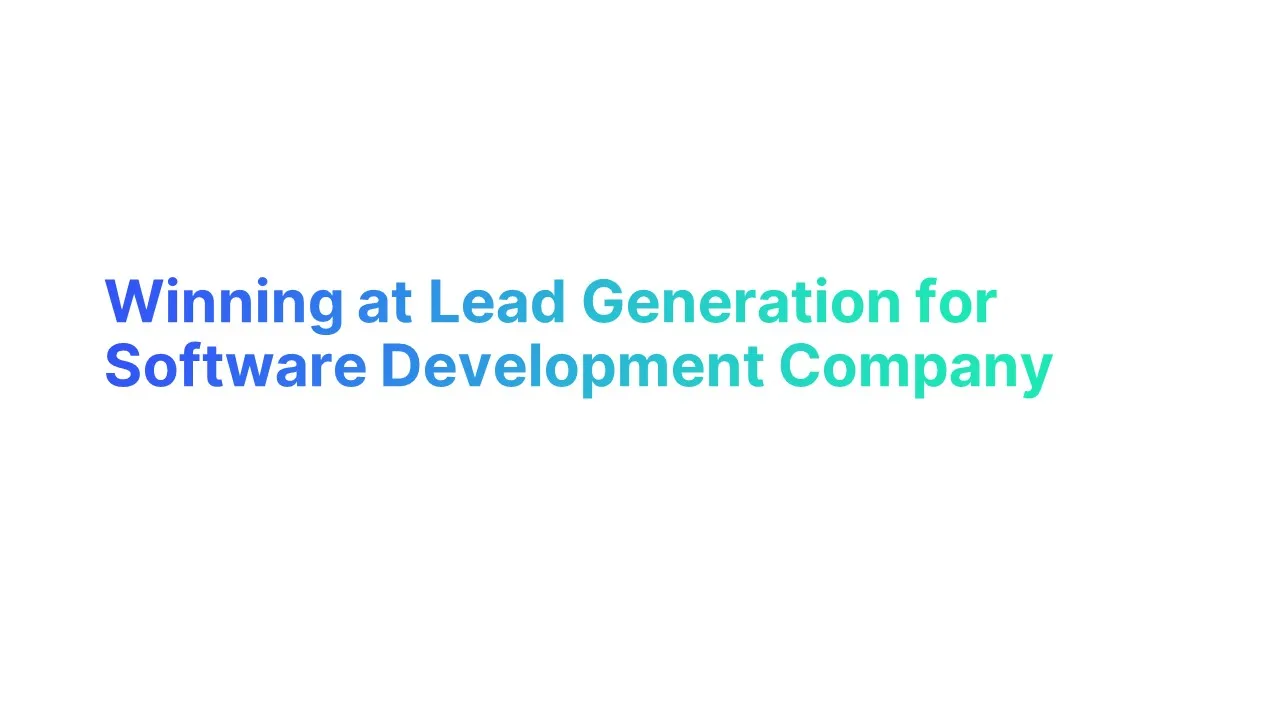



.jpg)

.jpg)
